Pain Neurocircuitry and Cellular Plasticity Lab
Lab Alumni

Anisha Adke, Postbaccalaureate Fellow
Anisha Adke was a postbaccalaureate fellow in the Pain Neurocircuitry and Cellular Plasticity Lab from 2018 to 2020. She graduated from the University of Oregon in 2018 with a major in biology. While in the lab, Anisha contributed to the characterization of different cell types in the central amygdala, the parabrachial-to-central amygdala circuit, and the zona incerta-to-central amygdala circuit. She is currently an M.D./Ph.D. student at the University of Minnesota.
Research Publications:
Torres-Rodriguez JM, Wilson TD, Singh S, Torruella-Suarez ML, Chaudhry S, Adke AP, Becker JJ, Neugebauer B, Lin JL, Martinez Gonzalez S, Soler-Cedeño O, Carrasquillo Y. The parabrachial to central amygdala circuit is a key mediator of injury-induced pain sensitization. Neuropsychopharmacology. 2024;49(3):508-520.
Singh S, Wilson TD, Valdivia S, Benowitz B, Chaudhry S, Ma J, Adke AP, Soler-Cedeño O, Velasquez D, Penzo MA, Carrasquillo Y. An inhibitory circuit from central amygdala to zona incerta drives pain-related behaviors in mice. eLife. 2022;11:e68760.
Miller Neilan R, Majetic G, Gil-Silva M, Adke AP, Carrasquillo Y, Kolber B. Agent-based modeling of the central amygdala and pain using cell-type specific physiological parameters. PLOS Computational Biology. 2021;17(6):e1009097.
Singh S, Valdivia S, Soler-Cedeño O, Adke AP, Benowitz B, Velasquez D, Wilson TD, Carrasquillo Y. Bidirectional modulation of pain-related behaviors in the zona incerta. bioRxiv. Preprint posted online March 12, 2021.
Wilson TD, Valdivia S, Khan A, Ahn H-S, Adke AP, Gonzalez SM, Sugimura YK, Carrasquillo Y. Dual and opposing functions of the central amygdala in the modulation of pain. Cell Reports. 2019;29(2):332-346.
Adke AP, Khan A, Ahn H-S, Becker JJ, Wilson TD, Valdivia S, Sugimura YK, Gonzalez SM, Carrasquillo Y. Cell-type specificity of neuronal excitability and morphology in the central amygdala. eNeuro. 2021;8(1):ENEURO.0402-20-2020.

Helena Hyesook Ahn, Biologist
Helena Ahn was a biologist in the Pain Neurocircuitry and Cellular Plasticity Lab from 2015 to 2017. She received her master’s degree in molecular immunology at the University of Seoul in Seoul, South Korea and received her Ph.D. degree in neurobiology at the Graduate School of Medical Science, The Catholic University of Korea, in Seoul, South Korea. While in the Carrasquillo Lab, Helena examined how the intrinsic excitability of amygdala neurons is modulated by persistent pain using electrophysiology. In addition, she investigated the role of amygdala neurons in anxiety- and depression-like behaviors in mouse models of neuropathic pain. Helena is currently the operations coordinator at the National Center for Complementary and Integrative Health.
Research Publications:
Wilson TD, Valdivia S, Khan A, Ahn H-S, Adke AP, Gonzalez SM, Sugimura YK, Carrasquillo Y. Dual and opposing functions of the central amygdala in the modulation of pain. Cell Reports. 2019;29(2):332-346.
Adke AP, Khan A, Ahn H-S, Becker JJ, Wilson TD, Valdivia S, Sugimura YK, Gonzalez SM, Carrasquillo Y. Cell-type specificity of neuronal excitability and morphology in the central amygdala. eNeuro. 2021;8(1):ENEURO.0402-20-2020.
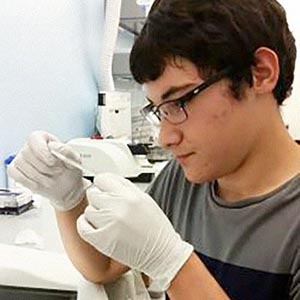
Simon Arango, Summer Student Trainee and Special Volunteer
Simon Arango was a summer student and special volunteer in the Pain Neurocircuitry and Cellular Plasticity Lab in 2015. He graduated from the Magnet Program at Poolesville High School in 2017. While in the lab, Simon worked on characterizing ERK activation in the brain using a model of inflammatory pain. He also mapped brain regions that receive projections from the PKCδ-expressing neurons using a cre-dependent anterograde tracer in PKCδ-cre mice. After leaving the lab, Simon pursued a major in neuroscience and East Asian studies from Harvard College, while working as a research data specialist at Dana-Farber Cancer Institute. His work contributed to the publication “Dual and Opposing Functions of the Central Amygdala in the Modulation of Pain,” as mentioned in the acknowledgments.
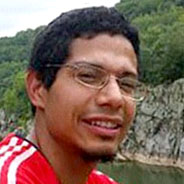
Yonatan Arnold, Summer Student Trainee and Special Volunteer
Yonatan Arnold joined the Pain Neurocircuitry and Cellular Plasticity Lab in January 2015. He received a bachelor’s degree in sociology and history in 2011 from Mars Hill University in North Carolina. While in the lab, Yonatan assisted with histological experiments and quantification of images. After leaving the lab, he joined an Amazon Web Service (AWS) re/Start course through Per Scholas, which is an intense and thorough course in gaining experience in using the AWS cloud service. After this course, he aims to pursue a position to help those who need to improve their tools in the health care field.

Jordan Becker, Postbaccalaureate Fellow
Jordan Becker was a postbaccalaureate fellow in the Pain Neurocircuitry and Cellular Plasticity Lab from 2018 to 2019. He graduated from the University of Idaho with a degree in psychology. While in the lab, he studied the morphology of specific cell types in the central amygdala, if different central amygdala cells modulate affective outcomes during formalin-induced pain, and how environmental conditions impact the expression of comorbidities during chronic pain. While at the National Institutes of Health he won an outstanding poster award and gained acceptance to the Brown-Graduate Partnership Program (GPP). He is currently a second-year graduate student in the Brown-GPP.
Research Publications:
Torres-Rodriguez JM, Wilson TD, Singh S, Torruella-Suarez ML, Chaudhry S, Adke AP, Becker JJ, Neugebauer B, Lin JL, Martinez Gonzalez S, Soler-Cedeño O, Carrasquillo Y. The parabrachial to central amygdala circuit is a key mediator of injury-induced pain sensitization. Neuropsychopharmacology. 2024;49(3):508-520.
Becker JJ, Carrasquillo Y. Projections, where art thou: the state and future of the central amygdala. Journal of Physiology. 2019;597(2):365-366.
Adke AP, Khan A, Ahn H-S, Becker JJ, Wilson TD, Valdivia S, Sugimura YK, Gonzalez SM, Carrasquillo Y. Cell-type specificity of neuronal excitability and morphology in the central amygdala. eNeuro. 2021;8(1):ENEURO.0402-20-2020.
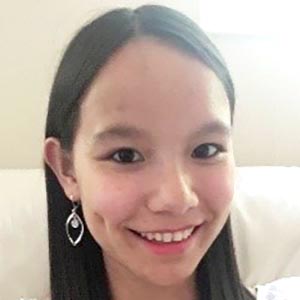
Barbara Benowitz, Postbaccalaureate Fellow
Barbara Benowitz was a postbaccalaureate fellow in the Pain Neurocircuitry and Cellular Plasticity Lab. Barbara graduated from Gettysburg College in 2020 with a bachelor’s degree in psychology. She is interested in studying the role of the central amygdala in the modulation of pain-related behaviors as well as the neurocircuitry associated with reward behaviors and motivation. While in the lab, Barbara contributed to a project looking at the central amygdala–zona incerta pathway, and its involvement in chronic pain modulation. After leaving the lab, Barbara joined Dr. Garret Stuber’s lab at the University of Washington as a research assistant.
Research Publications:
Singh S, Wilson TD, Valdivia S, Benowitz B, Chaudhry S, Ma J, Adke AP, Soler-Cedeño O, Velasquez D, Penzo MA, Carrasquillo Y. An inhibitory circuit from central amygdala to zona incerta drives pain-related behaviors in mice. eLife. 2022;11:e68760.
Singh S, Valdivia S, Soler-Cedeño O, Adke AP, Benowitz B, Velasquez D, Wilson TD, Carrasquillo Y. Bidirectional modulation of pain-related behaviors in the zona incerta. bioRxiv. Preprint posted online March 12, 2021.
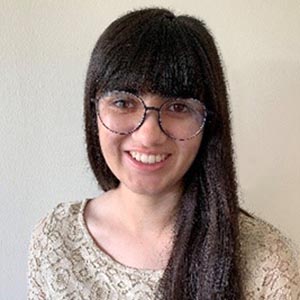
Sarah Chaudhry, Postbaccalaureate Fellow
Sarah Chaudhry was a postbaccalaureate fellow in the Pain Neurocircuitry and Cellular Plasticity Lab. Sarah graduated from Michigan State University in 2020 with a dual degree in neuroscience and Spanish. Sarah is interested in investigating the electrophysiological properties of neurons located in the central nucleus of the amygdala to further understand the mechanisms that direct the brain’s modulation of pain. She contributed to a project focused on characterizing the synaptic and intrinsic membrane properties of neurons in the parabrachial-central amygdala pathway.
Research Publications:
Torres-Rodriguez JM, Wilson TD, Singh S, Torruella-Suarez ML, Chaudhry S, Adke AP, Becker JJ, Neugebauer B, Lin JL, Martinez Gonzalez S, Soler-Cedeño O, Carrasquillo Y. The parabrachial to central amygdala circuit is a key mediator of injury-induced pain sensitization. Neuropsychopharmacology. 2024;49(3):508-520.
Singh S, Wilson TD, Valdivia S, Benowitz B, Chaudhry S, Ma J, Adke AP, Soler-Cedeño O, Velasquez D, Penzo MA, Carrasquillo Y. An inhibitory circuit from central amygdala to zona incerta drives pain-related behaviors in mice. eLife. 2022;11:e68760.
Allen HN, Chaudhry S, Hong VM, Lewter LA, Sinha GP, Carrasquillo Y, Taylor BK, Kolber BJ. A parabrachial-to-amygdala circuit that determines hemispheric lateralization of somatosensory processing. Biological Psychiatry. 2023;93(4):370-381.
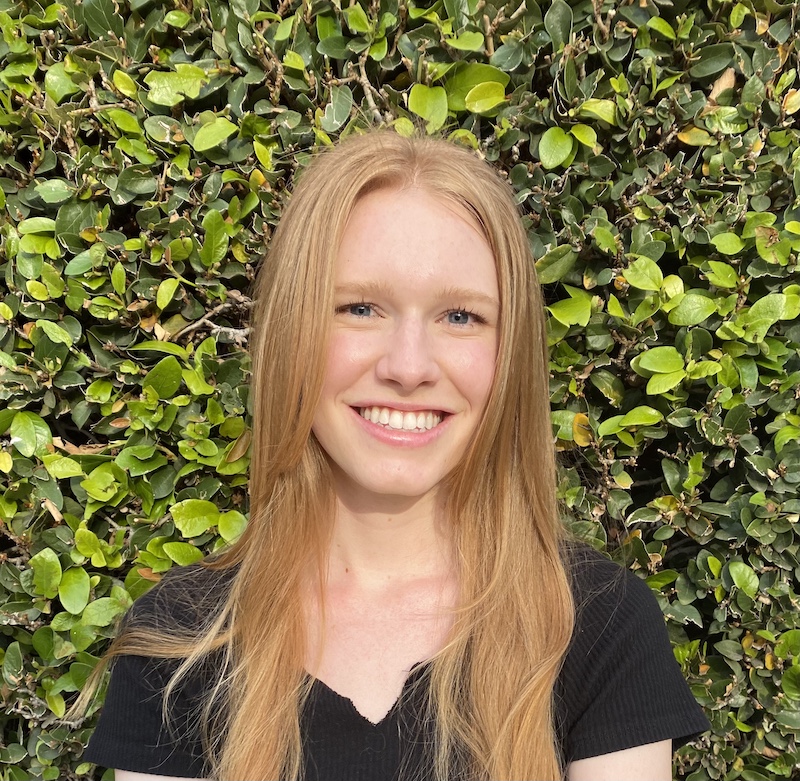
Ana Danko, Postbaccalaureate
Ana Danko was a postbaccalaureate in the Pain Neurocircuitry and Cellular Plasticity Lab. She joined the lab in summer 2021 as a summer intern. Ana currently attends the University of Southern California and will be graduating in December 2021 with a major in human development and aging. During the summer, Ana worked on quantification of mCherry, cfos, and PKCδ cells in the central amygdala (CeA) and zona incerta (ZI) for a project examining pain modulation via the CeA to ZI pathway. She is currently contributing to histological experiments for a project studying pain-related maladaptive aversion in this circuit.
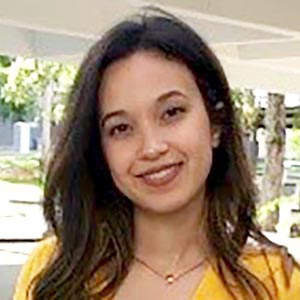
Adela Francis-Malavé, Postbaccalaureate Fellow
Adela Francis-Malavé was a postbaccalaureate fellow in the Pain Neurocircuitry and Cellular Plasticity Lab. Adela graduated from the University of Puerto Rico, Rio Piedras Campus, in 2020 with a B.S. in biology with an emphasis in cellular and molecular biology. She is interested in understanding the brain circuits that underlie pain-related behaviors and the different pharmacologic approaches that can produce antinociception in mouse models of inflammatory pain. Other research topics of interest to Adela are neurodegenerative diseases and autoimmune diseases of the nervous system. Adela is currently working on evaluating the potential antinociceptive and anti-inflammatory effect of 4R-cembranoid, a novel positive allosteric modulator type 2 of alpha 7 nicotinic acetylcholine receptors, in a mouse model of inflammatory pain. Adela is a recipient of the NIH Office of Intramural Training and Education Travel/Meeting Award. After leaving the lab, Adela pursued a medical degree on a full ride scholarship at University of Pennsylvania Perelman School of Medicine.
Research Publications:
Rivera-García LG, Francis-Malavé AM, Castillo ZW, Uong CD, Wilson TD, Ferchmin PA, Eterovic V, Burton MD, Carrasquillo Y. Anti-hyperalgesic and anti-inflammatory effects of 4R-tobacco cembranoid in a mouse model of inflammatory painLink to External Link Policy. Journal of Inflammation. 2024;21(1):2.
Francis-Malave AM, Martinez Gonzalez S, Pichardo C, Wilson TD, Rivera LG, Brinster LR, Carrasquillo Y. Sex differences in pain-related behaviors and clinical progression of disease in mouse models of visceral pain. bioRxiv. Preprint posted online January 12, 2022.
Rivera-García LG, Francis-Malavé AM, Wilson TD, Ferchmin PA, Eterovic V, Carrasquillo Y. 4R-Tobacco-cembranoid is a positive allosteric modulator of the alpha7 nicotinic acetylcholine receptor that modulates inflammation-induced thermal hypersensitivity in mice. bioRxiv. Preprint posted online January 23, 2022.
Butler-Fernández KM, Ramos Z, Francis-Malavé AM, Bloom J, Dharmawardhane S, Hernández E. Synthesis, anti-cancer and anti-migratory evaluation of 3,6 dibromocarbazole and 5-bromoindole derivatives. Molecules. 2019;24(15):2686.

Saba Ghodrati, Postbaccalaureate Fellow
Saba Ghodrati was a postbaccalaureate fellow in the Pain Neurocircuitry and Cellular Plasticity Lab. Saba graduated from the University of Texas (UT) at San Antonio in 2023 with a B.A. in medical humanities. During her time in San Antonio, Saba conducted behavioral pharmacology research at UT Health San Antonio, where she studied novel treatments for opioid use disorder using a series of nociceptive and behavioral assays in rats. Saba is interested in investigating the electrophysiological properties of neurons located in the central nucleus of the amygdala to further understand the mechanisms underlying the brain’s modulation of pain. She is currently working on a project focused on evaluating potential time-dependent changes in synaptic transmission in the basolateral-central amygdala pathway in a mouse model of neuropathic pain. Saba can be reached at saba.ghodrati@nih.gov.
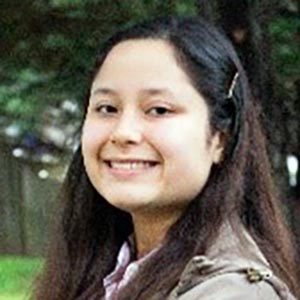
Michelle Guevara, Summer Student Trainee and Special Volunteer
Michelle Guevara was a summer student and a special volunteer as a junior in high school in the Pain Neurocircuitry and Cellular Plasticity Lab from 2018 to 2020. She graduated in 2020 from the Academy of Health Professions at Sherwood High School in Sandy Spring, Maryland. While in the lab, her project was to identify the efferent projection of somatostatin-expressing (Som) cells and cortical releasing hormone (CRH)-expressing cells in the central amygdala using the anterograde tracer AAV8-DIO-mCherry and immunostaining to determine the unknown anatomical circuit involved in the cell-type specific modulation of pain in the central amygdala. After leaving the lab, Michelle pursued a degree in neuroscience from the University of Maryland, College Park.
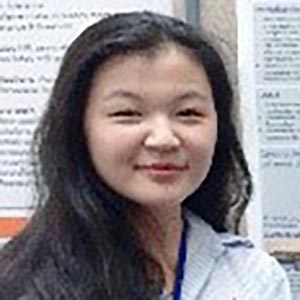
Sara Hong, Summer Student Trainee
Sara Hong was a summer student in the Pain Neurocircuitry and Cellular Plasticity Lab in 2016 and 2017. She graduated from Poolesville High School in 2017. While in the lab, she studied spontaneous nociceptive responses and changes in affective behaviors in a mouse model of neuropathic pain as well as the effects of inhibitory Gi-DREADDs in pain processing and their relationship with ERK activation in the amygdala. After leaving the lab, Sara pursued a dual degree in health and exercise science and politics and international affairs at Wake Forest University.

Aleisha Khan, Postbaccalaureate Fellow
Aleisha was a postbaccalaureate fellow in the Pain Neurocircuitry and Cellular Plasticity Lab from 2016 to 2018. She graduated from Duke University in 2015 with a B.S. in neuroscience. She received her master’s degree in physiology in 2019 from Georgetown University. While in the lab, she examined the bidirectional modulation of pain in the central amygdala. She conducted electrophysiology experiments, examining the firing properties of genetically distinct populations of neurons in the central amygdala in the context of inflammatory and neuropathic pain. Aleisha also assisted with immunohistochemistry experiments and anatomical mapping. Furthermore, she conducted electrophysiology experiments examining the baseline properties of genetically distinct cells in the central amygdala. During this time, she received the Clinical and Basic Science Data Blitz Presentation Award from the American Pain Society in 2018 at the Scientific Summit in Anaheim, California. She also received the $500 Poster Presentation Award in 2018 at the National Institute of Neurological Disorders and Stroke Intramural Scientific Retreat in Bethesda, Maryland. Aleisha will pursue her medical degree at the Medical College of Georgia beginning in fall 2021.
Research Publications:
Wilson TD, Valdivia S, Khan A, Ahn H-S, Adke AP, Gonzalez SM, Sugimura YK, Carrasquillo Y. Dual and opposing functions of the central amygdala in the modulation of pain. Cell Reports. 2019;29(2):332-346.
Adke AP, Khan A, Ahn H-S, Becker JJ, Wilson TD, Valdivia S, Sugimura YK, Gonzalez SM, Carrasquillo Y. Cell-type specificity of neuronal excitability and morphology in the central amygdala. eNeuro. 2021;8(1):ENEURO.0402-20-2020.

Jenny Lin

Jon MacLeod, Postbaccalaureate Fellow
Jon MacLeod joined the Pain Neurocircuitry and Cellular Plasticity Lab in June 2014. He received a bachelor’s degree in neuroscience from the College of William and Mary in Williamsburg, Virginia. Jon used anatomical and histological approaches to determine the molecular identity of nociceptive-responsive neurons in different regions along the pain neuraxis.

Santiago Martinez Gonzalez, Postdoctoral Fellow
Santiago Martinez Gonzalez joined the Pain Neurocircuitry and Cellular Plasticity Lab in September 2016, working part-time as a special volunteer, and transitioned to a postdoctoral fellow in June 2017. He received a bachelor’s degree in biological sciences from the University of Maryland, College Park and completed a medical degree at the Universidad del Rosario in Bogotá, Colombia. While in the lab, Santiago worked on a project that aimed to establish the underlying brain mechanisms by which chronic visceral pain develops and persists in the absence of measurable pathology in the viscera and its relationship with maladaptive changes in affective behaviors. He conducted experiments designed to optimize dextran sodium sulfate as a model of colitis in mice to produce measurable disease, pathology, and mechanical visceral hypersensitivity. In addition, he studied the modulation of heat and cold hypersensitivity by Som and PKCd neurons in the central amygdala and the parabrachial-central amygdala circuit in a mouse model of neuropathic pain. He received the Neuroscience Scholars Program (NSP) Professional Development Award and the US-Canada Regional Committee of International Brain Research Organization Fellowship Award in 2019, and was a Society for Neuroscience NSP Associate in 2018–2019. After leaving the lab, Santiago pursued a medical residency program.
Research Publications:
Torres-Rodriguez JM, Wilson TD, Singh S, Torruella-Suárez ML, Chaudhry S, Adke AP, Becker JJ, Neugebauer B, Lin JL, Martinez Gonzalez S, Soler-Cedeño O, Carrasquillo Y. The parabrachial to central amygdala pathway is critical to injury-induced pain sensitization in mice. Neuropsychopharmacology. 2024;49(3):508-520.
Francis-Malave AM, Martinez Gonzalez S, Pichardo C, Wilson TD, Rivera LG, Brinster LR, Carrasquillo Y. Sex differences in pain-related behaviors and clinical progression of disease in mouse models of visceral pain. bioRxiv. Preprint posted online January 12, 2022.
Wilson TD, Valdivia S, Khan A, Ahn H-S, Adke AP, Gonzalez SM, Sugimura YK, Carrasquillo Y. Dual and opposing functions of the central amygdala in the modulation of pain. Cell Reports. 2019;29(2):332-346.
Adke AP, Khan A, Ahn H-S, Becker JJ, Wilson TD, Valdivia S, Sugimura YK, Gonzalez SM, Carrasquillo Y. Cell-type specificity of neuronal excitability and morphology in the central amygdala. eNeuro. 2021;8(1):ENEURO.0402-20-2020.
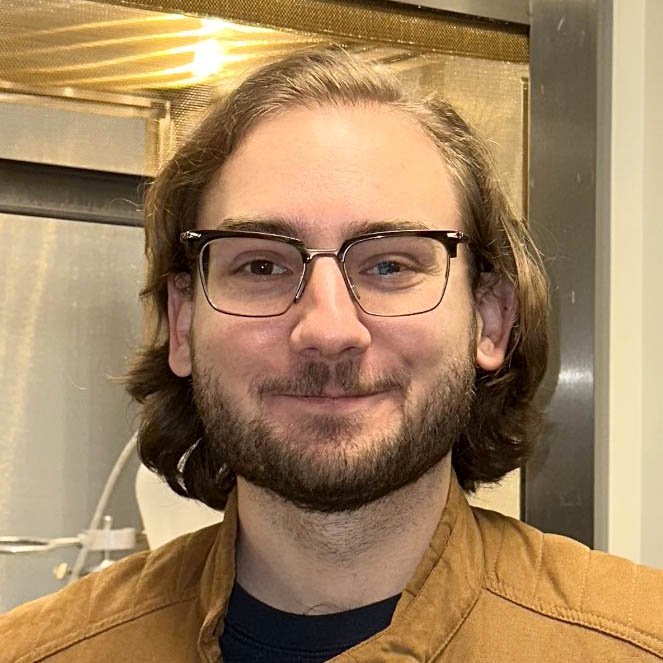
Benjamin Neugebauer, Postbaccalaureate Fellow
Benjamin Neugebauer was a postbaccalaureate fellow in the Pain Neurocircuitry and Cellular Plasticity Lab. Benjamin graduated from Texas Tech University in 2020 with a B.A. in psychology. Benjamin is interested in studying the amygdala’s role in pain modulation and is currently contributing to electrophysiological studies determining the function of the parabrachial-central amygdala pathway in pain-related behaviors in the context of injury.
Research Publications:
Torruella-Suárez ML, Neugebauer B, Flores-Felix K, Keller A, Carrasquillo Y, Cramer N. Divergent changes in PBN excitability in a mouse model of neuropathic pain. eNeuro. 2024;11(3):ENEURO.0416-23.2024.
Torres-Rodriguez JM, Wilson TD, Singh S, Torruella-Suárez ML, Chaudhry S, Adke AP, Becker JJ, Neugebauer B, Lin JL, Martinez Gonzalez S, Soler-Cedeño O, Carrasquillo Y. The parabrachial to central amygdala pathway is critical to injury-induced pain sensitization in mice. Neuropsychopharmacology. 2024;49(3):508-520.
Mazzitelli M, Yakhnitsa V, Neugebauer B, Neugebauer V. Optogenetic manipulations of CeA-CRF neurons modulate pain- and anxiety-like behaviors in neuropathic pain and control rats. Neuropharmacology. 2022;210:109031.
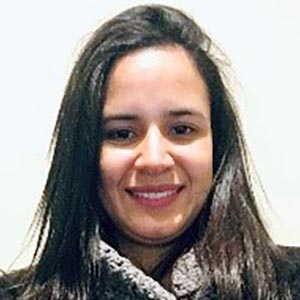
Caren Pichardo, Pediatric Gastroenterology Fellow
Caren Pichardo was a pediatric gastroenterology fellow at Children's National who worked in the Pain Neurocircuitry and Cellular Plasticity Lab from 2016 to 2018. She received her medical degree in 2008 at Universidad Iberoamericana (UNIBE) and completed her pediatric residency in 2015 at Miami Children’s Hospital. While in the lab, Caren examined the modulation of pain-related behaviors by the amygdala in a rodent model of visceral pain. Caren is currently a board-certified pediatrician and pediatric gastroenterologist at Unity Healthcare in Washington, D.C.
Research Publications:
Francis-Malavé, A.M., Martinez Gonzalez, S., Pichardo, C., Wilson, T.D., Rivera-Garcia, L.G., Brinster, L.R. and Carrasquillo, Y. (2023) Sex differences in pain-related behaviors and clinical progression of disease in mouse models of colonic pain. Pain. 2023;164(1):197-215.
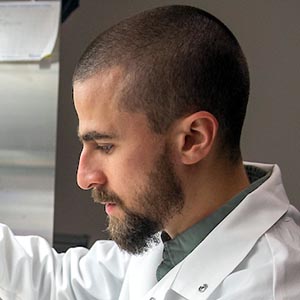
Luis Rivera, Predoctoral Fellow
Luis Rivera was a predoctoral fellow in the Pain Neurocircuitry and Cellular Plasticity Lab. Luis graduated from the University of Puerto Rico, Rio Piedras Campus, in 2014 with a B.S. in chemistry. He is currently studying how 4R-cembranoid, a compound found in tobacco leaf, positively modulates the alpha7 nicotinic acetylcholine receptor allosterically using electrophysiology in vitro. In addition, he is also examining how this modulation ameliorates inflammatory pain-related behaviors in vivo.
Research Publications:
Rivera-García LG, Francis-Malavé AM, Castillo ZW, Uong CD, Wilson TD, Ferchmin PA, Eterovic V, Burton MD, Carrasquillo Y. Anti-hyperalgesic and anti-inflammatory effects of 4R-tobacco cembranoid in a mouse model of inflammatory painLink to External Link Policy. Journal of Inflammation. 2024;21(1):2.
Francis-Malavé, A.M., Martinez Gonzalez, S., Pichardo, C., Wilson, T.D., Rivera-Garcia, L.G., Brinster, L.R. and Carrasquillo, Y. (2023) Sex differences in pain-related behaviors and clinical progression of disease in mouse models of colonic pain. Pain. 2023;164(1):197-215.
Rivera-García LG, Francis-Malavé AM, Wilson TD, Ferchmin PA, Eterovic V, Carrasquillo Y. 4R-Tobacco-cembranoid is a positive allosteric modulator of the alpha7 nicotinic acetylcholine receptor that modulates inflammation-induced thermal hypersensitivity in mice. bioRxiv. Preprint posted online January 23, 2022.

Omar Soler-Cedeno, Ph.D., Postdoctoral Fellow
Omar Soler-Cedeno, Ph.D., was a National Institute of General Medical Sciences Postdoctoral Research Associate Training (PRAT) Program fellow in the Pain Neurocircuitry and Cellular Plasticity Lab. Omar earned his Ph.D. at the Ponce Health Sciences University in the laboratory of James T. Porter, where he studied the ventral hippocampus and prefrontal cortex connectivity using animal models of post-traumatic stress disorder and exposure therapy. His long-term goal is to become an independent investigator and establish a research program that will combine state-of-the-art neurocircuitry tools and behavioral approaches to study chronic pain and mental health comorbidity. He currently combines ex vivo and in vivo approaches to study the synaptic dynamics of the parabrachial nucleus-to-central amygdala ascending pathway using rodent models of neuropathic and inflammatory pain. After leaving the lab, Omar started a postdoctoral position at the National Institute on Drug Abuse.
Research Publications:
Torres-Rodriguez JM, Wilson TD, Singh S, Torruella-Suárez ML, Chaudhry S, Adke AP, Becker JJ, Neugebauer B, Lin JL, Martinez Gonzalez S, Soler-Cedeño O, Carrasquillo Y. The parabrachial to central amygdala pathway is critical to injury-induced pain sensitization in mice. Neuropsychopharmacology. 2024;49(3):508-520.
Singh S, Wilson TD, Valdivia S, Benowitz B, Chaudhry S, Ma J, Adke AP, Soler-Cedeño O, Velasquez D, Penzo MA, Carrasquillo Y. An inhibitory circuit from central amygdala to zona incerta drives pain-related behaviors in mice. Elife. 2022;11:e68760.
Singh S, Valdivia S, Soler-Cedeño O, Adke AP, Benowitz B, Velasquez D, Wilson TD, Carrasquillo Y. Bidirectional modulation of pain-related behaviors in the zona incerta. bioRxiv. Preprint posted online March 12, 2021.
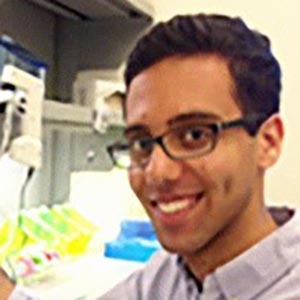
Garshasb (Gary) Soroosh, Summer Student Trainee
Garshasb (Gary) Soroosh was a summer student in the Pain Neurocircuitry and Cellular Plasticity Lab in 2014 and 2015. He graduated from the University of Maryland, College Park in 2017 with a bachelor’s degree in biology, with a concentration in physiology and neurobiology. While in the lab, Gary contributed to projects analyzing the molecular characterization of nociceptive neurons in the amygdala and their anatomical projections. In addition, he also studied the anatomical localization of a molecular signal for pain in the mouse brain, as well as time-dependent expression of molecular signals in the amygdala in mouse models of inflammatory pain. After leaving the lab, Gary attended Johns Hopkins University School of Medicine and planned to pursue a career in internal medicine.
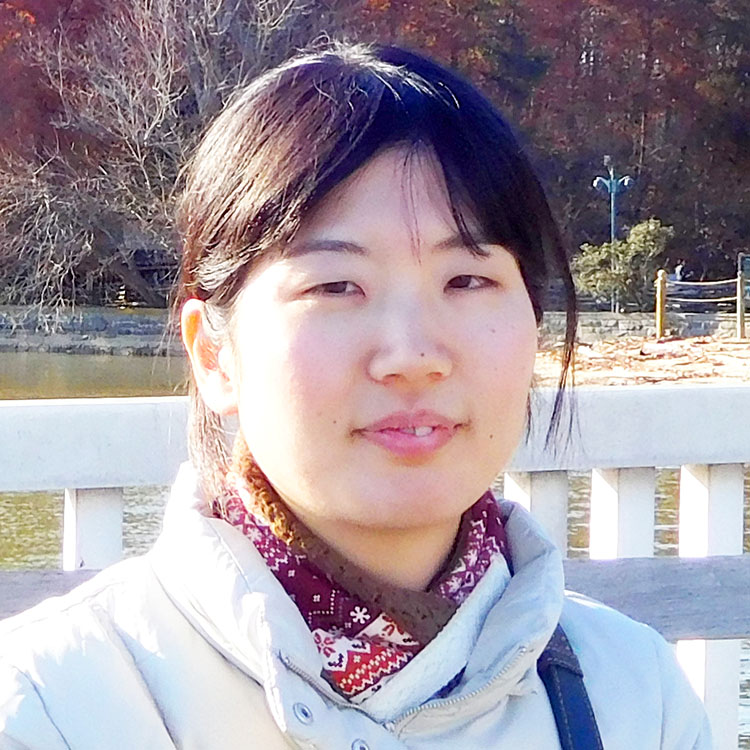
Yae Sugimura, Special Volunteer
Yae Sugimura was a special volunteer in the Pain Neurocircuitry and Cellular Plasticity Lab from 2017 to 2018. She graduated from Hiroshima University in 2007 with a Major in Health Sciences. She received her Ph.D. in neuroscience in 2016 from the Jikei University School of Medicine. While in the lab, she examined the synaptic plasticity in the brain pain network.
Research Publications:
Wilson TD, Valdivia S, Khan A, Ahn H-S, Adke AP, Gonzalez SM, Sugimura YK, Carrasquillo Y. Dual and opposing functions of the central amygdala in the modulation of pain. Cell Reports. 2019;29(2):332-346.
Adke AP, Khan A, Ahn H-S, Becker JJ, Wilson TD, Valdivia S, Sugimura YK, Gonzalez SM, Carrasquillo Y. Cell-type specificity of neuronal excitability and morphology in the central amygdala. eNeuro. 2021;8(1):ENEURO.0402-20-2020.

Jeitzel Torres, Postbaccalaureate Fellow
Jeitzel Torres was a postbaccalaureate fellow in the Pain Neurocircuitry and Cellular Plasticity Lab. Jeitzel graduated from the University of Puerto Rico, Mayagüez Campus, in 2020 with a B.S. in biology. Jeitzel was interested in studying pain at the behavioral and circuit levels using mouse models, with the goal of obtaining a M.D. or M.D./Ph.D. Also, she wanted to assess lateralization of these circuits and compare female and male data. Currently, Jeitzel is working on determining the function of the parabrachial-central amygdala pathway in pain-related behaviors in the context of injury. Jeitzel won the Outstanding Poster Award, NIH Postbac Poster Day, 2021. She also recently won an “Outstanding Poster Presentation Award” at the 2021 Annual Biomedical Research Conference for Minority Students (ABRCMS). After leaving the lab, Jeitzel pursued a medical degree at Ponce Health Science University.
Research Publications:
Torres-Rodriguez JM, Wilson TD, Singh S, Torruella-Suárez ML, Chaudhry S, Adke AP, Becker JJ, Neugebauer B, Lin JL, Martinez Gonzalez S, Soler-Cedeño O, Carrasquillo Y. The parabrachial to central amygdala pathway is critical to injury-induced pain sensitization in mice. Neuropsychopharmacology. 2024;49(3):508-520.
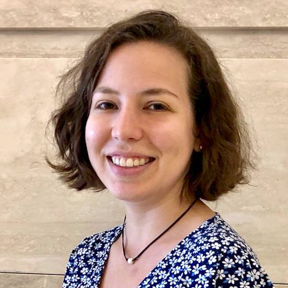
María Luisa Torruella Suárez, Ph.D., Postdoctoral Fellow
María Luisa Torruella Suárez is a postdoctoral fellow in the Pain Neurocircuitry and Cellular Plasticity Lab. María Luisa graduated from Yale University in 2015 with a B.S. in molecular, cellular, and developmental biology. She earned her Ph.D. in neuroscience at the University of North Carolina at Chapel Hill in 2021 in the lab of Dr. Zoe McElligott. Her doctoral work investigated the role of neurotensin neurons in the central amygdala in alcohol consumption. She is currently exploring the role of plasticity of parabrachial inputs to the central amygdala in neuropathic pain. She is interested in the role of experience-dependent plasticity in affective disorders. After leaving the lab, María Luisa started a position as a pharmacology toxicology reviewer at the U.S. Food and Drug Administration.
Research Publications:
Torruella-Suárez ML, Neugebauer B, Flores-Felix K, Keller A, Carrasquillo Y, Cramer N. Divergent changes in PBN excitability in a mouse model of neuropathic pain. eNeuro. 2024;11(3):ENEURO.0416-23.2024.
Torres-Rodriguez JM, Wilson TD, Singh S, Torruella-Suárez ML, Chaudhry S, Adke AP, Becker JJ, Neugebauer B, Lin JL, Martinez Gonzalez S, Soler-Cedeño O, Carrasquillo Y. The parabrachial to central amygdala pathway is critical to injury-induced pain sensitization in mice. Neuropsychopharmacology. 2024;49(3):508-520.
Torruella-Suárez ML, Vandenberg JR, Cogan ES, Tipton GJ, Teklezghi A, Dange K, Patel GK, McHenry JA, Hardaway JA, Kantak PA, Crowley NA, DiBerto JF, Faccidomo SP, Hodge CW, Stuber GD, McElligott ZA. Manipulations of central amygdala neurotensin neurons alter the consumption of ethanol and sweet fluids in mice. The Journal of Neuroscience. 2020;40(3):632-647.

Spring Valdivia Torres, Ph.D., Visiting Postdoctoral Fellow
Spring Valdivia Torres was a visiting postdoctoral fellow in the Pain Neurocircuitry and Cellular Plasticity Lab from 2016 to 2018. She received her undergraduate degree in biochemistry in 2010 at the National University of La Plata (Buenos Aires, Argentina). She received her Ph.D. in 2015 from the same university. While in the lab, Spring contributed to several projects analyzing visceral pain, the zona incerta’s role in pain modulation, central amygdala projections, and more. She is currently a postdoctoral fellow at the Cellular and Molecular Neurophysiology Lab at the Instituto de Investigaciones Biológicas Clemente Estable (IIBCE) in Montevideo, Uruguay.
Research Publications:
Singh S, Wilson TD, Valdivia S, Benowitz B, Chaudhry S, Ma J, Adke AP, Soler-Cedeño O, Velasquez D, Penzo MA, Carrasquillo Y. An inhibitory circuit from central amygdala to zona incerta drives pain-related behaviors in mice. Elife. 2022;11:e68760.
Singh S, Valdivia S, Soler-Cedeño O, Adke AP, Benowitz B, Velasquez D, Wilson TD, Carrasquillo Y. Bidirectional modulation of pain-related behaviors in the zona incerta. bioRxiv. Preprint posted online March 12, 2021.
Wilson TD, Valdivia S, Khan A, Ahn H-S, Adke AP, Gonzalez SM, Sugimura YK, Carrasquillo Y. Dual and opposing functions of the central amygdala in the modulation of pain. Cell Reports. 2019;29(2):332-346.
Adke AP, Khan A, Ahn H-S, Becker JJ, Wilson TD, Valdivia S, Sugimura YK, Gonzalez SM, Carrasquillo Y. Cell-type specificity of neuronal excitability and morphology in the central amygdala. eNeuro. 2021;8(1):ENEURO.0402-20-2020.
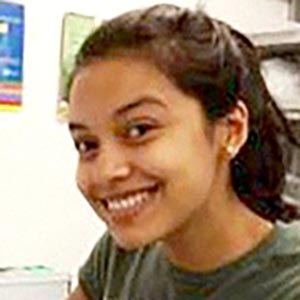
Daniela Velasquez, Summer Student Trainee and Special Volunteer
Daniela Velasquez was a special volunteer in 2015 and a summer student in 2016 and 2017 in the Pain Neurocircuitry and Cellular Plasticity Lab. She graduated in 2019 from Towson University with a degree in biology. While in the lab, Daniela analyzed the efferent projections of PKCδ+ and Sst cells in the central amygdala and also designed a 3D reconstruction of the mouse brain pertaining to pain “on” and pain “off” cells. Daniela is currently pursuing a master of biological sciences at Geisinger Commonwealth School of Medicine, planning to graduate in 2021 and planned to attend medical school.
Research Publications:
Singh S, Wilson TD, Valdivia S, Benowitz B, Chaudhry S, Ma J, Adke AP, Soler-Cedeño O, Velasquez D, Penzo MA, Carrasquillo Y. An inhibitory circuit from central amygdala to zona incerta drives pain-related behaviors in mice. Elife. 2022;11:e68760.
Singh S, Valdivia S, Soler-Cedeño O, Adke AP, Benowitz B, Velasquez D, Wilson TD, Carrasquillo Y. Bidirectional modulation of pain-related behaviors in the zona incerta. bioRxiv. Preprint posted online March 12, 2021.